Written by Brent Huntley in ATV Maintenence
There are few things that get my heart pumping like the shock of hearing a backfire when I’m out riding an ATV. It happened enough on an older ATV I had, I decided I had to put an end to it.
Why do ATV’s Backfire? ATVs usually backfire because of a short, sudden moment where the engine is running too rich or too lean. That means that it’s either getting more fuel than it needs for the amount of air it takes in, or else not enough.
There are different reasons this can happen. Let’s look into what those are and what you need to do about it.
First let’s look at what backfiring actually is. If you’re reading this, you probably already know what backfiring is—or at least what it sounds like.
But what backfiring actually is, is a little explosion—yes, I said explosion—in the intake or exhaust of your ATV’s engine. But don’t worry. These explosions are supposed to happen, they’re just supposed to happen in the combustion chamber…
When the little explosion happens elsewhere, you get a pop and a really short interruption in your ATV’s normal operation. Sometimes, it can be bad enough to shut off the engine and you have to restart, but usually it’s just a sudden “pop” sound with maybe a short pause that can make you lurch forward slightly in your seat.
Most of the time it’s pretty harmless, but if it’s happening a lot on your four wheeler, you should probably try to figure out what’s causing it.
We already talked about backfiring being caused by either too much or too little fuel compared to air. But let’s explore that a little more.
For the fuel in your ATV to burn—which is how it makes your four wheeler actually go—it needs 3 things.
The fuel and some air enter the combustion chamber in just the right amounts and are ignited by a spark plug. But if there’s too much or too little fuel for the amount of air that comes in, then it can’t actually burn—or really, explode—inside the combustion chamber. So the explosion takes place either on the intake side or on the exhaust side.
But if there’s too much or too little fuel for the amount of air that comes in, then it can’t actually burn—or really, explode—inside the combustion chamber. So the explosion takes place either on the intake side or on the exhaust side.
So four wheelers backfire whenever there’s too much or too little fuel. Now obviously it’s not a problem of constantly running too rich or too lean. If you were constantly running that way, then the engine wouldn’t run at all. Remember, it’s caused by short moments where there’s too much or not enough fuel, which means the problem with your ATV is pretty small. Most of the time, it’s running correctly.
So what’s causing it? Here are a few of the most common causes.

Most of the time, I find that ATVs backfire when I let off the throttle. I’m slowing down or even coasting and then “POP”—I get a backfire. That’s probably because the engine is trying to idle just to keep running and not enough fuel is getting to the engine.
Sometimes I get a backfire when I’m accelerating or just riding along but not very often. It’s usually when slowing down or right after I let off the gas. That’s because for just a moment, the engine is running a little extra rich.
If backfiring is happening in the exhaust (after the engine) then it will cause damage to the muffler and exhaust system over time. A backfire here and there isn’t usually a big deal but having those explosions over and over again in a place where they’re not intended is going to cause some damage. It usually leads to leaks in the muffler or exhaust.
On the intake side, regular backfires can lead to engine damage. You could blow the intake valves or even ruin a carburetor. But this kind of damage appears to be pretty rare, so unless it’s happening pretty often, I wouldn’t be too worried about the occasional backfire on my ATV.
Because backfiring has so many possible causes, it’s not really practical to try to fix everything at once. Especially because some of the fixes can be pretty spendy. So when troubleshooting, I find that it makes sense to start with the simplest and least expensive fixes first.
Especially because some of the fixes can be pretty spendy. So when troubleshooting, I find that it makes sense to start with the simplest and least expensive fixes first.
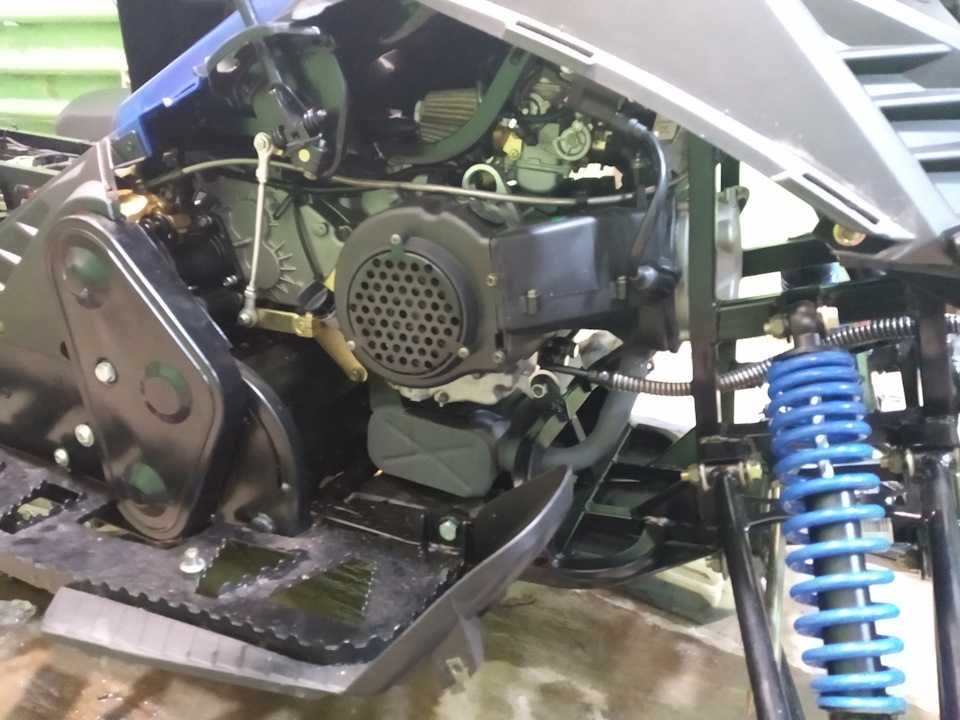 It’s usually really simple, like the turn of a dial, to increase or decrease the amount of fuel that goes into your engine when idling. Make really small adjustments one way and test it out. Then it will probably be better or worse. If it’s worse, try going the other way.
It’s usually really simple, like the turn of a dial, to increase or decrease the amount of fuel that goes into your engine when idling. Make really small adjustments one way and test it out. Then it will probably be better or worse. If it’s worse, try going the other way.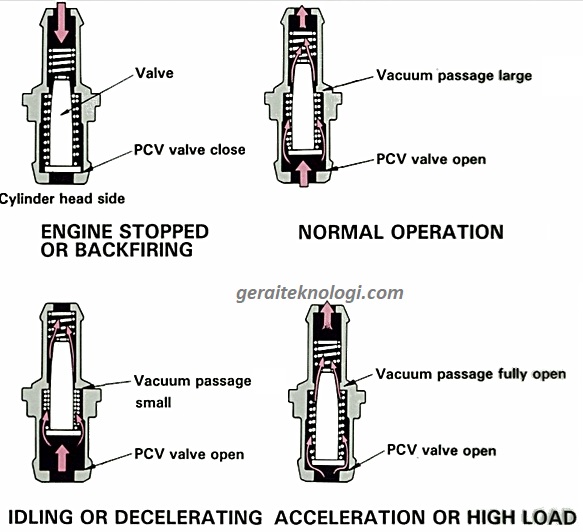 It probably won’t be real cheap, but if the easy fixes haven’t worked this probably will.
It probably won’t be real cheap, but if the easy fixes haven’t worked this probably will.And that’s it. Just remember that the occasional backfire is actually really normal and nothing to really worry about. But if it’s a common occurrence on your four wheeler, then it’s worth looking into.
My New Favorite Accessory for Winter Riding
Over the past several months, as the weather has gotten cooler, I have been testing out the Venustas Heated Vest for my cold-weather photography. I wrote all about it over at Photography &...
I wrote all about it over at Photography &...
Continue Reading
link to How To Use An ATV SpreaderHow To Use An ATV Spreader
One of the greatest things about summer is yard work. As the heat and humidity rise, so do the plants and flowers. The advent of technology has made seeding and fertilizing, a job that used to...
Continue Reading
Were you recently driving your ATV and noticed a sudden and loud bang or pop, potentially causing you to jolt forward? It is likely that this was resulting from your ATV backfiring- something that is relatively common but can still be concerning.
ATVs commonly backfire due to the imbalance of air and fuel sparked outside of the combustion chamber. This minor explosion takes place in the engine’s intake or exhaust and can cause the vehicle to shut off. Common reasons include issues with the fuel/air mixture, carburetor, ignition, or fuel pump.
Though this might sound (and feel) incredibly intimidating, you should know that it is a relatively common occurrence with ATVs. With that in mind, you should take caution, but likely will only need to take action should this become a common occurrence.
Fortunately, there are many areas that you can check to resolve the issue. Continue reading to learn more about common reasons why ATVs backfire and how to fix the issue when it happens.
If you want to look at the mechanics of why your ATV is backfiring, you can understand the general principle that is causing this to occur. Backfiring occurs when a minor explosion takes place in the engine’s intake or exhaust as the spark plug ignites the fuel that has escaped the combustion chamber.
This occurs when there is an imbalance in the fuel to air ratio (among other reasons).
If your ATV is backfiring, you should check a few of the common reasons:
Depending on the cause, there are plentiful solutions to resolve this common occurrence.

Again, it is important to recognize that this issue (backfiring) is relatively common with ATVs. Though, that might not be the most comforting thought when you or your loved one feels the sharp jolt caused by the backfiring vehicle.
When this issue begins to take place more frequently, then you should attempt to narrow down the issue through the process of elimination. Or, you can always have the vehicle inspected by a professional if you are unsure of what could be causing the problem.
Here’s someone with a Raptor 660 having backfiring issues to give you an idea of what this could look like.
In order for your ATV to work, a specified balance of fuel and air enter into the combustion chamber. Ignited by the spark plug, the engine is given the power that it needs to propel forward. However, if there is too much fuel (and consequently too little air) being supplied, then it is likely that the excess fuel will leak outside of the chamber.
Ignited by the spark plug, the engine is given the power that it needs to propel forward. However, if there is too much fuel (and consequently too little air) being supplied, then it is likely that the excess fuel will leak outside of the chamber.
When this happens, the excess fuel will become ignited by the spark plug- the igniting will just take place outside of where it is supposed to (the combustion chamber).
Then, you will feel the effects of this minor explosion occurring in the wrong location as the sudden pop causes you to startle and your vehicle to jump along with you.
An imbalanced fuel/air mixture can be viewed from a few different angles that typically cause the same result: a backfiring ATV. In this sense, you can see that there is “too much fuel” or “too little air”. What this really means is that the equilibrium that is needed to cause the vehicle to work properly is off, and you will likely experience the resulting backfiring.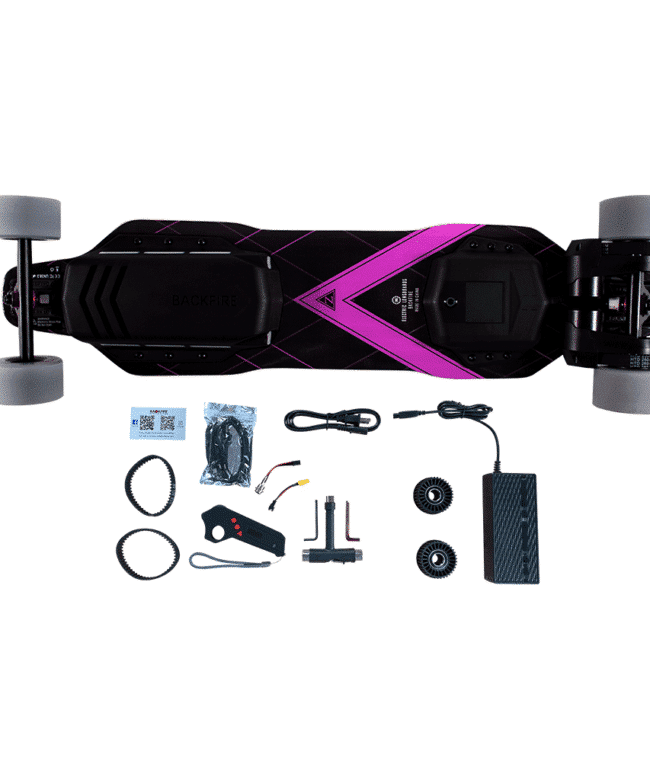
However, too much fuel could indicate a fuel leak, and too little air could indicate a clogged component of your vehicle such as the air filter, exhaust, or beyond.
In addition to there being too much fuel, you may also find that there are too little fuel and too much air. In the same sense, the imbalance is what causes the backfiring as the combustion chamber is not filled with the right amount of both “ingredients” simultaneously. To function properly, remember that the engine needs to have both the fuel and air at the proper proportion.
If you find that not enough fuel is mixed in this ratio, then this could indicate another issue.
Primarily, you will likely find that the fuel filter is clogged or the carburetor is packed with “old” oil. Either way, this main reason why your ATV is backfiring can be broken down into a few more reasons that will be shared below. These are some of the root issues that could be causing the fuel/air mixture to be imbalanced in the first place.
If you are finding that your ATV has begun to backfire rather frequently, then you are going to want to check a few top concerns out.
One reason that your ATV could backfire regularly, especially if your ATV has been sitting in storage for a while, is that the carburetor is clogged.
Though it is tough to distinguish “old” gas from “new” gas just by looking at it, the effects of fuel sitting in your vehicle for long periods can be detrimental to the vehicle’s function.
When your ATV is left sitting at bay for long periods and goes unused, the fuel can begin to degrade and clog up the carburetor. Consequently, a clogged carburetor will not allow the appropriate amount of fresh air into the intake portion of the engine.
With this, the air and fuel ratio will become imbalanced, and you will likely find that your ATV is backfiring regularly.
Backfiring on your ATV due to a faulty or clogged carburetor can be something that begins to occur more and more frequently. In essence, once the degraded oil begins to compile, it is not as likely that you will burn through it without experiencing the jolt of an ATV backfire in the process.
In essence, once the degraded oil begins to compile, it is not as likely that you will burn through it without experiencing the jolt of an ATV backfire in the process.
Of course, this can become a safety concern when you begin to experience it regularly.
Not only are you experiencing the physical jolt of your ATV when it backfires- potentially throwing you or your friends and family members off of the vehicle- but a minor explosion is taking place outside of the combustion chamber. This, though not noticeable as you might first picture when the term ‘explosion’ is brought up, is still a danger in the long run.
Here’s a video showing the backfiring issue related to a clogged carb and how to fix it.
I recommend having some Gumout Carb and Choke Cleaner (link to Amazon) handy if you plan on cleaning your carb.
A faulty ignition/engine is something that you might begin to sound more concerned about, as this can impact serious components of your all-terrain vehicle. However, keep in mind that when this is causing your ATV to backfire, you will at least know the root cause and be able to move on from there.
If your ignition/engine is faulty, then you might have a few issues to work around.
For starters, a faulty ignition could simply mean that you need new spark plugs. In this instance, if your spark plugs are not igniting the fuel inside of the combustion chamber, and instead continue to ignite the fuel in the intake or exhaust, then you will notice your ATV backfiring pretty frequently.
Fortunately, replacing spark plugs is not the end of the world, and these are just small components of the entire ATV.
Next, a faulty ignition could mean that the timing is delayed for the ignition to light the fuel. This means that there could be a slight gap from when the ignition is intended to begin (when the fuel chamber is closed) and when it actually happens (when the fuel chamber is open).
This means that there could be a slight gap from when the ignition is intended to begin (when the fuel chamber is closed) and when it actually happens (when the fuel chamber is open).
When this occurs, your ATV is not able to properly engage in the way it was designed, and your ATV will backfire quite frequently.
This could also be the case if there are parts of the ignition that are broken or not functioning properly. If the ignition coils, for example, are broken, then the ignition will not be able to operate as it was designed to do. Then, your ATV is at a high risk of backfiring.
Along these lines, a faulty engine could mean that there is something wrong like a leak, bend, or break in the components of the engine. Consider if there is a crack in your muffler or exhaust, for example.
If this is the case, then the air and fuel flow will not be consistent, and you will have variable ranges of the two “ingredients” as they enter the combustion chamber. This means that your ATV is, again, at risk of backfiring.
This means that your ATV is, again, at risk of backfiring.
Here’s a quick video showing how to replace an ignition on an ATV to give you an idea of what’s involved.
Again, when you are looking at the issues with your ATV backfiring, it is likely because there was not enough (or too much) fuel being allowed into the engine either through the intake or in the exhaust.
This means that the “leftover” fuel is being ignited in the exhaust, or the fuel that is being blocked by “too much air” is being lit in the intake portion.
Either way, the balance is off for the combustion chamber meaning the unsteady flow results in a backup of the “ingredients” and, consequently, the resulting backfire. As the flow of the fuel and air is imbalanced, the vehicle is not capable of performing how it was intended to perform.
As the flow of the fuel and air is imbalanced, the vehicle is not capable of performing how it was intended to perform.
One reason that this could occur is the weak or low pressure from the fuel pump.
Though there are many reasons that the engine could be receiving too much or too little fuel, a fuel pump that is too weak or low pressure could mean that not enough fuel is being supplied in the first place. While you are attempting to fill up your ATV with fuel, you could be supplying a smaller portion than you are assuming you are.
This could mean that there is not enough fuel in the first place, thus, the imbalance would be due to insufficient fuel being supplied through the intake.
If this is the reason, then you might be fortunate as you will simply have to monitor how much fuel you are putting into your vehicle and ensure that there are no leaks that could otherwise be causing this issue.
In this case, you would be able to narrow down whether or not the fuel pump was the source of the issue, or if there were other reasons why the fuel is not making its way to the combustion chamber as intended.
Here’s a quick video showing how to check the fuel flow so you can try to rule that out as a problem.
Determining how to resolve your backfiring issue with your ATV will take the process of elimination. If you are familiar with the components of your ATV, then you might be able to check a few of these options yourself. Otherwise, you can always bring your vehicle to a professional for an inspection and repairs.
Listed above are some of the common reasons that an ATV backfires including the imbalance of fuel/air mixture that is perpetuated by issues with the carburetor, ignition, engine, and fuel pump.
Fixing these issues means finding the root of the issue and addressing the particular need.
This could include a wide array of actions, so pay attention to the vehicle and how it is operating.
If you are experiencing one of the above (or similar) issues, here are a few suggestions for resolving your ATV’s backfiring issues:
Observe and change the air and fuel filtersIf the primary reason that your ATV backfires has to do with the air fuel mixture being slightly off, then it is imperative that your fuel and air filters are working appropriately. This means that they should be blocking out any particles such as dirt and mud that could otherwise clog them up.
Similar to driving another automobile, these should be regularly changed. However, some could argue that this is even more important when operating your ATV considering the various terrain that you could be driving on.
If your filters seem like they could be changed, then they probably could be. This simple fix will not cost a very high amount, but it will definitely save you and your ATV in the long run.

Not all ATVs are set up the same, but here’s an example video showing how to replace an ATV air filter.
Clean your fuel injector and carburetorAnother component for the proper injection of fuel and air is the mechanical aspects of the fuel injector and carburetor. As mentioned above, these can become clogged or faulty. If they are, then they will not be able to properly release the amount of fuel/air that is needed to run your ATV.
Consequently, remaining fuel will get left in the intake or exhaust and cause the ATV to backfire.
As a simple solution to this, you can be sure to clean your fuel injector and carburetor. You might need to purchase a solution that will clean these out- though this is still an easier feat than damaging yourself or your vehicle.
You might need to purchase a solution that will clean these out- though this is still an easier feat than damaging yourself or your vehicle.
I recommend having some Gumout Carb and Choke Cleaner (link to Amazon) handy if you plan on cleaning your carb.
Here’s a quick video showing a work around way to clean the fuel injectors on an ATV.
Use high-quality fuelIt might seem somewhat obvious, but the type of fuel that you use on your vehicle affects its overall performance. If you are using low-quality or “old” gas in your ATV, then you can expect to experience a low-quality ATV performance including backfiring.
Instead of allowing your ATV to backfire due to buildup or leaked fuel, be sure to choose a high-quality fuel that will help your vehicle (and its engine and other associated parts) to perform at their highest level.
Use appropriate settings on your throttleThe better you treat your ATV, the better you can expect it to treat you in terms of a quality experience (and no backfiring).
The throttle of the ATV is what releases the fuel into the engine and thus allows you to accelerate forward. Whether you have a thumb throttle or a twist throttle, you could be operating at a setting that is inappropriately providing too much fuel to your engine while you are sitting still (idling) or while you are in full swing.
To adjust the settings of your throttle, you will need to review the particular settings that are recommended for your vehicle. Either you can find these in your ATV’s operational guide, or you can do a quick search to see what is appropriate given the varying terrains, speeds, and your personal use of the throttle (and vehicle).
Hire a professionalThough you might want to learn about your ATV- and perhaps you enjoy the hands-on work that comes with taking care of this type of vehicle- it is best to leave the job to a professional if you do not know what you are doing.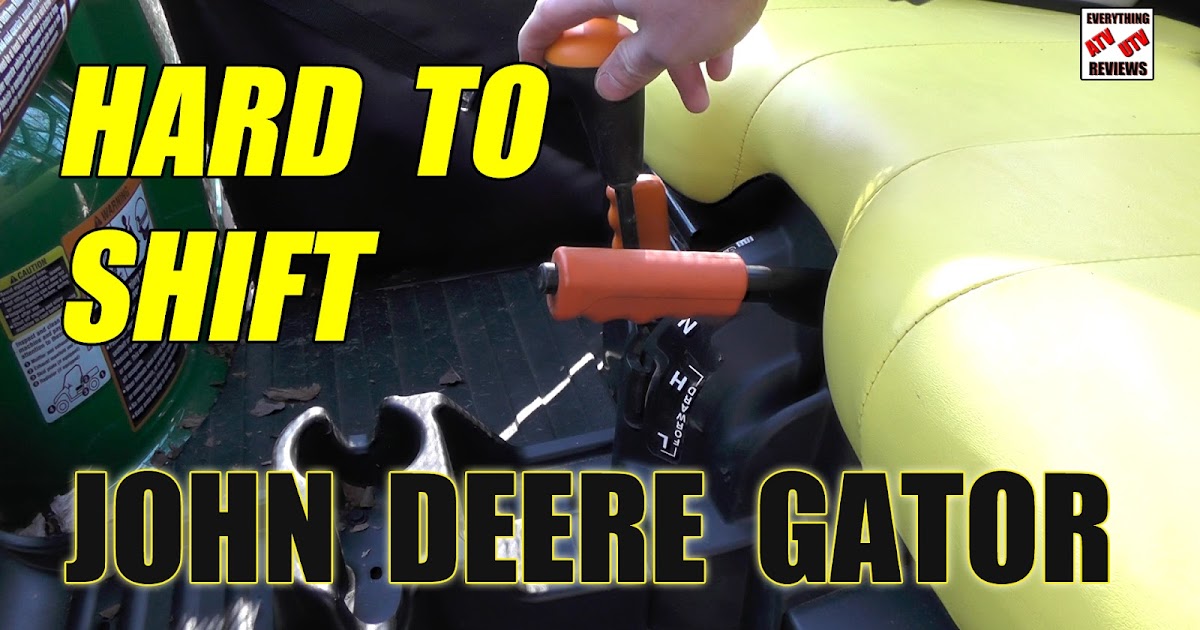
It is better to pay a bit out of pocket for a professional to run a few diagnostics than for you to cause (greater) harm to your vehicle.
There are several professional options available to you depending on your area. While some will have access to shops that can look at and review the mechanical and other issues going on with your ATV, this might not be the same for all.
Be sure to check with any local recommendations as many people who work contracts for ATVs- or those who consistently use them- likely have their set client list and expectations for professional practice.
Word of mouth can be incredibly helpful when searching for the right professional in your area, so try to be comfortable with meeting diverse people who are different (and yet have the same ATV interest) as you.
Sharing is caring!

ATVs (all-terrain vehicles) are compact and versatile vehicles. They are used for extreme recreation and sports competitions. They can effortlessly ride off-road and rough terrain. Wide wheels and a powerful engine make it easy to overcome dirt roads, potholes, ravines and slopes. Many summer residents, hunters and fishermen prefer to travel on ATVs. They can carry goods. In winter, they replace snowmobiles. A trip on such motor vehicles brings a lot of pleasant emotions. However, quad biking is an extreme form of transportation. And it is better to do it with professional instructors of the QuadRider club. Unlike motorcycles and other vehicles, they have a short wheelbase, narrow width and high center of gravity. Improper driving often leads to rollovers. Important to know how to drive an ATV correctly to avoid dangerous accidents. Appropriate training and compliance with driving rules is a guarantee of safety not only for drivers, but also for pedestrians.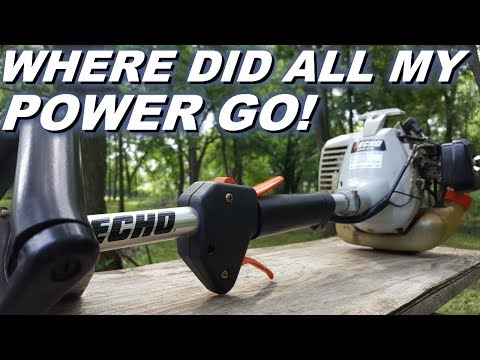
Before driving an ATV, you must do the following:
Operating a vehicle without a license and skills is fraught with serious injuries and large fines.

Strictly prohibited:

The rider's weight has a big impact on the handling of the ATV. Centrifugal forces are compensated by transferring body weight to the rear or front of the vehicle. Quads are a powerful technique, prone to tipping over and slipping. Wrong driving can cost lives. In this regard, it is necessary not only to know0031 how to ride a quad bike , but also to learn the basic rack.
When riding an ATV standing up, it is easier to avoid tipping over. There are 3 main stances common among ATVs. Each of them is used in certain situations.
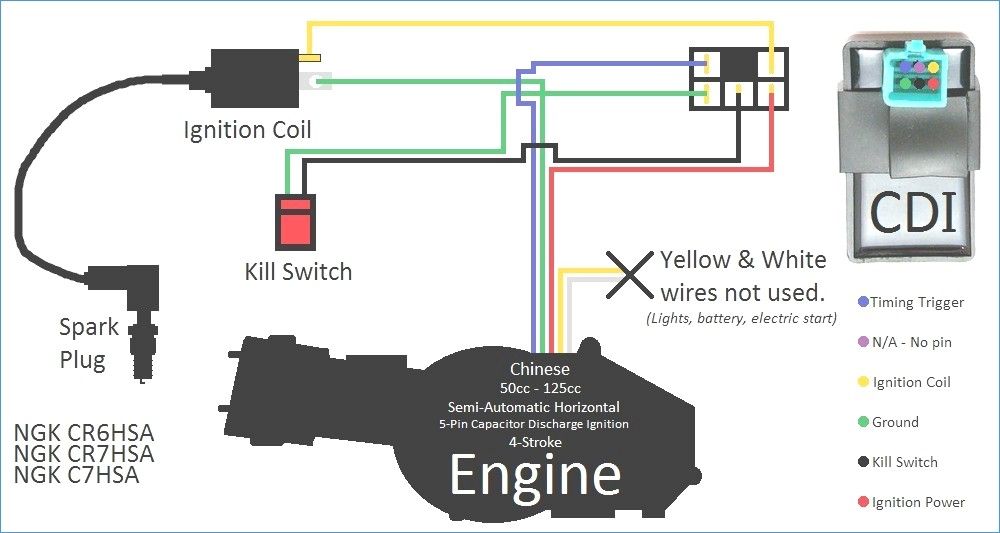 Tilt the body forward as much as possible and bend the knees slightly.
Tilt the body forward as much as possible and bend the knees slightly. A dangerous stance option is a tense back and straight legs. In this position, the body cannot absorb shocks and shocks. The spine and joints are subjected to enormous loads. In this situation, control over transport worsens.
The main ATV controls are located on the steering wheel. On the right handle are: throttle trigger, differential lock switch (2WD / 4WD / LOCK) and fuse. On all-wheel drive, cargo transportation, off-road driving and slippery roads are usually carried out. The differential lock ensures the synchronous rotation of the wheels. On the left side of the steering wheel is the ignition switch, engine start button, headlight switch and horn button.
On all-wheel drive, cargo transportation, off-road driving and slippery roads are usually carried out. The differential lock ensures the synchronous rotation of the wheels. On the left side of the steering wheel is the ignition switch, engine start button, headlight switch and horn button.
Sit in a correct and comfortable position on the ATV. Place your feet on the footrests and place your hands on the handlebars. Insert the key into the ignition switch and turn it to the "ON" mark. Then depress the brake pedal and the electric starter button. Hold the starter button for 5 seconds until the engine starts.
When the motor starts, let it run for 1 minute. In the cold season, warm it up for about 5 minutes. Before you start driving, make sure that there are no obstacles in the way (other vehicles and pedestrians). To move off, shift the gearbox to overdrive H. Release the brake pedal and gently press the gas trigger with your right thumb until you reach the desired speed. nine0031
Release the brake pedal and gently press the gas trigger with your right thumb until you reach the desired speed. nine0031
Slow down on curves and turns. Turn as far as possible. Entering the turn, lean your whole body and lower body into the turn. If you turn right, shift your body weight to the right. If you turn left, lean your whole body to the left side. In this way, you will avoid falling and overturning the ATV.
Correct gear shifting and ATV should be carried out after it has come to a complete stop. Release the throttle lever and press the brake pedal. Move the gearshift lever to the desired position. The selected gear indicator should light up on the instrument panel. The gear lever must be in the "H" (normal high gear) or "L" (extreme low gear) position. The "R" mode is used for reverse.
Pick up speed before entering the hillock. Drive only in a straight line. Move your body forward. Maintain a smooth speed after opening the throttle. Don't lose your vigilance. Try not to drive on hills, the angle of which exceeds 25 °. Climbing a hillock or a steep slope, do not step on the gas abruptly. Drive at medium engine speeds. If the ATV begins to roll backwards while climbing a hill, get up and apply the front brake. In this case, it is not necessary to use the engine power and the rear brake. If the quad has stopped, apply the rear brake and move the gear lever to park. Put the handcuff on the transport, turn around manually and try to repeat the ascent to the hillock again. To descend, take a back stance and bend your elbows slightly. Shift into low gear. To avoid tipping over, apply both front and rear brakes at the same time. Do it smoothly. Do not press the gas trigger when descending. Do not change the set trajectory of movement. nine0033
Drive only in a straight line. Move your body forward. Maintain a smooth speed after opening the throttle. Don't lose your vigilance. Try not to drive on hills, the angle of which exceeds 25 °. Climbing a hillock or a steep slope, do not step on the gas abruptly. Drive at medium engine speeds. If the ATV begins to roll backwards while climbing a hill, get up and apply the front brake. In this case, it is not necessary to use the engine power and the rear brake. If the quad has stopped, apply the rear brake and move the gear lever to park. Put the handcuff on the transport, turn around manually and try to repeat the ascent to the hillock again. To descend, take a back stance and bend your elbows slightly. Shift into low gear. To avoid tipping over, apply both front and rear brakes at the same time. Do it smoothly. Do not press the gas trigger when descending. Do not change the set trajectory of movement. nine0033
You need to drive down the slope in low gear, moving the body towards the top of the hill. Hang your body completely on the steepest slopes. On the slopes, you can not brake sharply and pick up speed sharply. If the slope is slippery and steep, try to take a different path.
Hang your body completely on the steepest slopes. On the slopes, you can not brake sharply and pick up speed sharply. If the slope is slippery and steep, try to take a different path.
Start braking well in advance before coming to a complete stop. To slow down, release the throttle. ATVs stop quickly. But in an emergency, press the foot pedal or brake lever. Stop on a level, level surface. After stopping, shift into neutral. This will help to avoid unforeseen situations when disembarking from the vehicle. nine0033
After learning how to ride the ATV, learn how to drive on flat terrain without obstacles and other moving vehicles. Make sure the brakes are working at low speed when starting, turning and stopping. At first, try to avoid jumps and high speeds. Also, avoid jumping when riding a sports ATV. With a sufficiently high power, quadrics cannot accelerate much. But, if you press the throttle trigger hard and sharply, the torque is quickly transferred to the wheels, and the ATV can jerk forward sharply. Try to avoid dangerous obstacles. Look always ahead. Don't press hard on the gas. Concentrate on the smoothness of the movement and the maneuvers being carried out. nine0033
But, if you press the throttle trigger hard and sharply, the torque is quickly transferred to the wheels, and the ATV can jerk forward sharply. Try to avoid dangerous obstacles. Look always ahead. Don't press hard on the gas. Concentrate on the smoothness of the movement and the maneuvers being carried out. nine0033
How to adjust the carburetor on an ATV? What to pay attention to? What are the signs of misuse of the device? About this today in our article. Using the proposed instructions, you will be able to set up the carburetor step by step without the help of specialists.
For stable operation of the ATV, it is necessary that the engine receives the optimal amount of combustible mixture corresponding to its rev range. Otherwise, the following problems may occur: nine0033
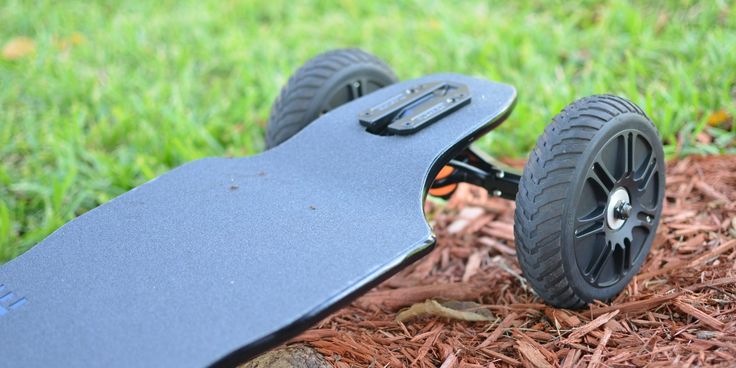
What should be applied in this case:
Important! Carry out tuning only when the carburetor is cleaned outside and inside, as well as when the engine is warmed up to operating temperature. nine0033
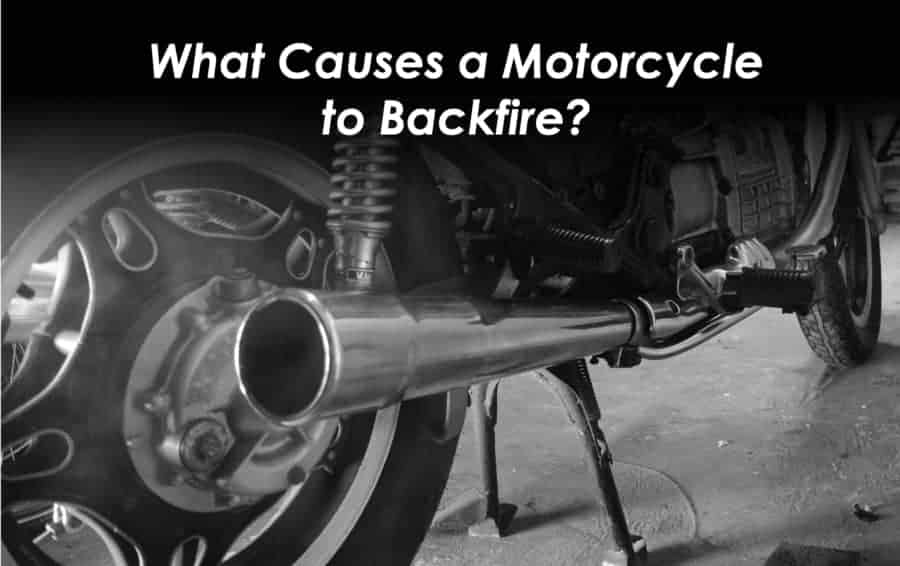 1 until it stops. Wait for the gasoline to merge completely, and tighten screw No. 1 back.
1 until it stops. Wait for the gasoline to merge completely, and tighten screw No. 1 back.  nine0004
nine0004 Note. The location of the bolts on each carburetor model may vary, so read the instructions that came with your machine.
1. Start the ATV and test ride. Wait until the engine has completely cooled down. nine0033
2. Check the condition of the spark plug. To do this, unscrew the cap and inspect the candle.
What to look for:

3. Unscrew the needle cover at the top of the carburetor. Pull the needle. This is the main element that regulates the supply of fuel to the combustion chamber, since the needle is connected to the gas trigger. When the trigger is pressed, the needle rises, slightly opening the hole for supplying the fuel mixture. This directly affects the growth of power and speed of the ATV.
This directly affects the growth of power and speed of the ATV.
4. Remove the cable, then press the needle to pull it out. The needle has 5 grooves and a retaining ring. By default, it is set to medium. The lower the retaining ring is located, the higher the needle is raised, which means that a lot of gasoline and little air is supplied. Accordingly, the higher the ring - the less gasoline and more air. nine0033
5. Reposition the circlip in the desired direction to optimize carburetor performance. Insert the needle into place.
6. Start the engine and press the throttle trigger. With proper adjustment, the engine should not stall from a sharp pressure.
And remember, you should resort to adjusting the needle only as a last resort, when adjusting the quality and quantity screw does not bring results.
The performance of a four-wheeler depends on the correct level of gasoline in the carburetor.